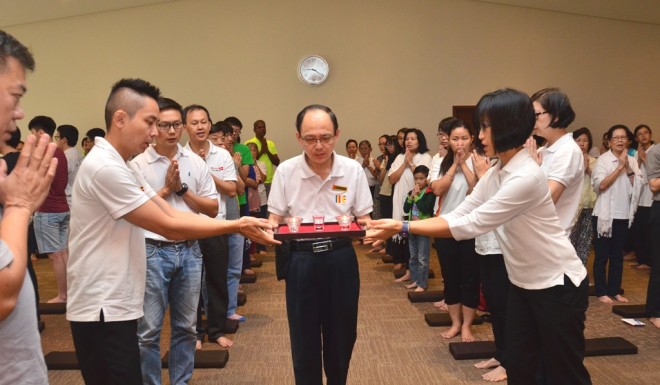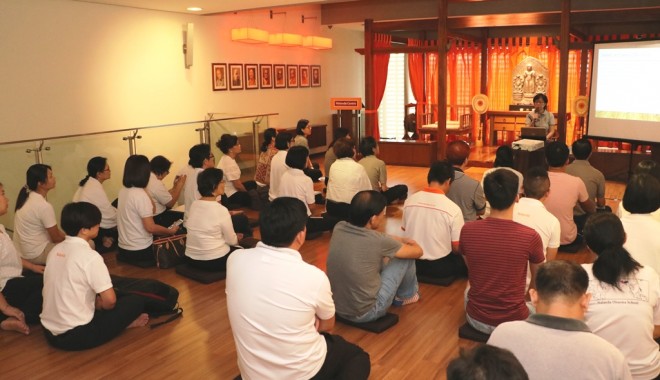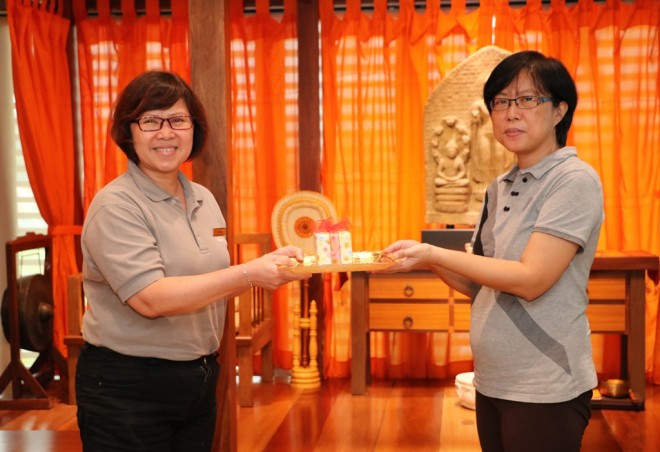The Buddha’s meditative experience
The Buddha’s meditative experience
At the Service Sunday on 9 October, Sis. Tan Yee Yong was invited to deliver a talk on ‘Meditation’. She recounted history by stating that certain meditation practices already existed before the Buddha’s time. In fact, the Buddha-to-be Siddhattha Gotama learned from two prominent meditation teachers of His time – Alara Kalama and Uddaka Ramaputta.
However, finding no liberation from suffering in practising both His teachers’ methods, He left them to practise on His own at the hills not far from present-day Bodhgaya. The Buddha-to-be recalled His first experience of ‘mental absorption’ (Pāli, ‘Jhāna’) when He was just five years old, while practising meditation under a tree during a royal ceremony.

Earlier in the morning, Deputy Chairman of Nalanda Sungai Petani Branch Dr. Song was present to lead the offering ceremony.
From memory, Siddhattha Gotama strove to replicate His ‘Jhāna’ experience, and soon attained right concentration again. His mind went through stages of tranquillity until it became extremely ‘bright’. He then turned His attention inward to investigate this body and mind, seeing how everything is impermanent (“Aniccā”), is of unsatisfactory nature (“Dukkhā”), and devoid of selfhood (“Anattā”).
Siddhattha finally realised the nature of life and universal truth – He had become ‘Enlightened’. Since then, the Buddha taught countless millions of people the same method of spiritual inquiry and investigation, which we know today as ‘Samatha-Vipassana’ meditation.



